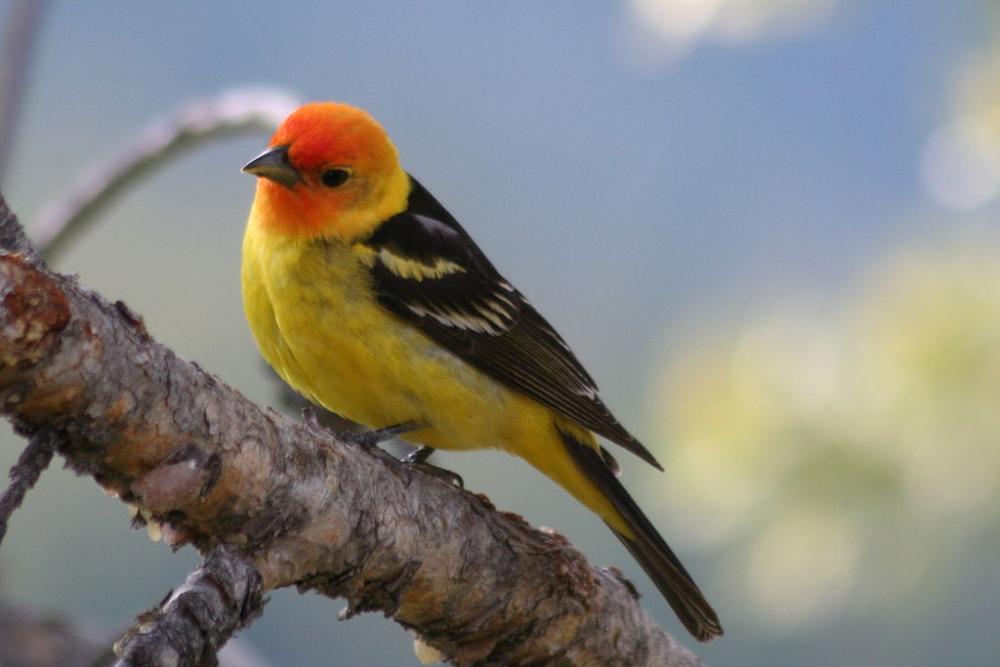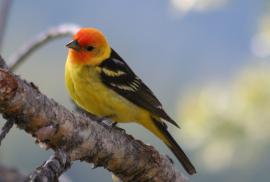Guide to Boreal Birds
Overview
In late spring and early summer the Western Tanager, first recorded on the Lewis and Clark expedition (1803-1806), feeds on insects, often like a flycatcher, from the high canopy. Later it feeds on berries and other small fruits.
Description
6-7 1/2" (15-19 cm). Adult male has brilliant red head, bright yellow body, with black back, wings, and tail. 2 wing bars; smaller uppermost bar yellow, lower one white. Female is yellow-green above, yellow below; wing bars similar to male's.
Voice
Song is robin-like in its short fluty phrases, rendered with a pause in between. The quality is much hoarser, however. Call is a dry pit-r-ick.
Nesting
3-5 bluish-green, speckled eggs in a frail, shallow saucer nest of woven rootlets, weed stalks, and bark strips, "saddled" in the fork of a horizontal branch of Douglas fir, spruce, pine, or occasionally oak, usually at a low elevation.
Habitat
Open coniferous forests.
Range/Migration
The fact that some members of this species commonly winter along the coast of southern California may be a recent phenomenon, as these birds are generally found in the vicinity of eucalyptus and other non-native ornamental plants. Older records show the northern extent of the Western Tanager's winter range to be central Baja California. The majority of this species winters in southwestern Mexico and Central America. The actual migratory routes of Western Tanagers are largely unknown. These birds are high-altitude nocturnal migrants and can apparently travel great distances in one night. One curious aspect of their migration is that some Western Tanagers arrive in breeding areas in northern Alberta at the same time that other Western Tanagers arrive in central Colorado, more than a thousand miles to the south. It is unknown whether these Alberta breeders follow the Pacific coast and turn eastward, if they follow the Rockies, or if they pass high over the northern Great Plains without being detected.
Breeds from southern Alaska and Mackenzie southward. Winters in tropics.



